It’s easy to overlook the importance of the final step in a sale – collecting the funds! That’s why it’s critical to develop a rock solid process for accounts receivable management and a comprehensive collections strategy that not only ensures that you get paid on time, but also removes the guesswork and anxiety in collecting your money.
Every company wants to be paid on time for their goods and services, but many have a hard time describing their collection strategies and policies - while other companies do not have stated policies at all. In fact, surveys show that only 20% of credit departments have formalized policies, and only a small percentage of those actually spend time communicating with customers regarding payment.
Why is it so difficult?
In this article, we’ll take a look at 4 common reasons that companies tell us it’s hard to develop a collections strategy and provide some tips for overcoming those obstacles.
1. Collections Department Is Isolated From The Sales Process
In many cases, the credit or collections department is isolated from the sales process. But most of the time, the sales department needs money to be collected before orders can ship. In reality, collecting money is the last step in the sale and the collections department should be working together with the sales team throughout the entire process. Continuous teamwork and collaboration between sales and collections is key – at the same time, the value of the collections work will be better recognized and appreciated.
See Also: Leveraging the Sales Team in the Collections Process
2. Industry Standards and Benchmarks Are Unknown
When developing a collections strategy, it’s important measure success against industry metrics. But some companies say it’s difficult to find, set, and measure against industry standards and benchmarks. Organizations such as the National Association of Credit Management (NACM) provide education on best practices as well as industry standards and benchmarks. Although it requires a time investment, reaching out to such organizations will actually save time in the long run, while providing the information you need to ensure your collections goals are on target and realistic.
3. Don’t Let Them Say “I Forgot”
It’s hard to set up a good AR management and collections system from scratch – it really is like re-inventing the wheel. Again, reaching out to credit associations like NACM (mentioned above) can save you time, offer educational opportunities, and provide information on best practices. NACM lays out steps in the collection process for 8 aging buckets ranging from 1 to 90+ days overdue. The NACM best practices recommended are a good place to start and then modify the collection strategy to your industry and company-specific goals.
4. Not All Customers Are The Same
Some businesses feel like each customer and situation is so unique, it’s impossible to define a company-wide collections strategy to address each situation. As an example, a credit manager of a nationwide company told me that every order is unique and before releasing the order to fulfillment, the manager must consider:
- Customer and parent company
- Customer ranking
- Recent payment trends
- What products are on the order
- Monetary amount of the order
This manager prefers to review and hand-hold each order of an overdue account before making a decision. Sometimes to get an order release decision, the account manager takes the order to the accounts receivable clerk, then to the accounts receivable manager, and then to the credit manager.
But this complicated, case-by-case practice increases costs by slowing down order fulfillment and consuming resources that would be better utilized for selling products.
How do you deal with this level of complexity?
Just as you rank your customers for credit limits, sales, and customer service levels, you should rank customers for collection policies. You would still develop an overall company-level collections strategy, of course, but you would also develop a slight variation of that policy for each customer-ranking group, as each group responds to collection efforts differently.
This requires tracking and reporting on how each customer-ranking group responds. You also need to understand and apply industry standards and benchmarks for each group when setting a policy – you don’t want to turn a customer away with collections actions that are overly aggressive and more restrictive than they’re accustomed to with your competitors.
See Also: How to Maintain Profit with Low-Rank Credit Clients
Cool, Calm, and COLLECTED
Although it is not easy to set up and implement collection strategies, it is most certainly worth it. The collections challenges described above are perfectly suited for automation using specialized accounts receivable management software like Collect-IT.
Not only does Collect-IT automate AR management and speed up workflow, it provides a central location for all the information necessary to make smart collections decisions and get paid faster. It also tackles the challenges discussed in this article with features like:
AR Collections Dashboard – effective AR and collections management is all about visibility and analytics. The dashboard in Collect-IT delivers everything you need to spot trends and see exactly what’s happening across the entire accounts receivable department, customer groups, or even specific accounts. With most “out of the box” accounting software, getting that information is incredibly difficult, if not impossible, and requires a significant investment of time that most companies simply do not have.
NACM Integration - Collect-IT arms you with the industry benchmarks, metrics, and other critical data you need to make credit decisions. In fact with our integration, you can view NACM Trade Credit Reports from inside Collect-IT.
Action Manager – Collect-IT features an action manager that offers visibility and workflow assistance to manage everything from reminders and collection letters to call lists or referring an account to a collections agency.
Custom Collection Strategies – every company and customer is unique so a one size collections strategy does not fit all. With Collect-IT, you can set up unlimited and customizable collections strategies, each of which can be assigned globally, to a range of customers, or down to an individual customer.
If you’re asking yourself ‘where’s my money’, Collect-IT has the answer!
Click below to learn more about the capabilities in Collect-IT or to request a personal demo and discover just how it easy it is to get paid on-time (much easier than raising a 3-year old!).
Want to See a Personal Demo?
Just leave your name and a note below. One of our friendly product consultants will follow up shortly to schedule your personal demo of Collect-IT.








